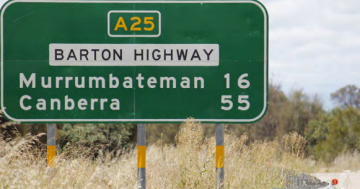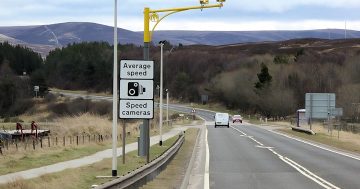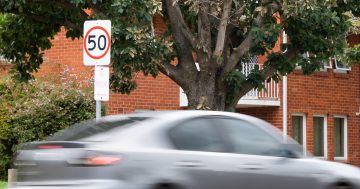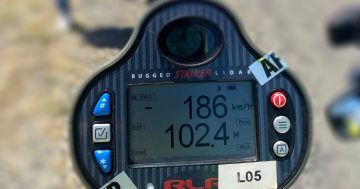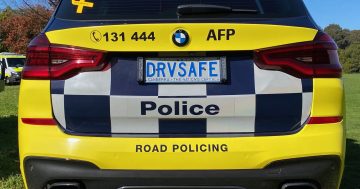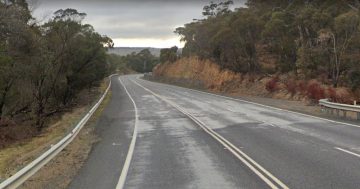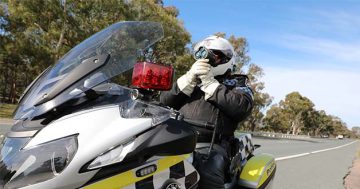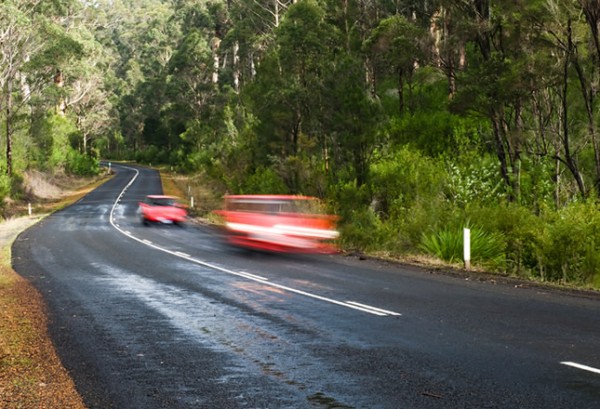
Reduced speed limits, as well as other measures such as safety barriers, are being planned to improve safety on the ACT’s roads. Photo: File.
The ACT Government is considering lower speed limits on major urban and rural roads to reduce the number of serious and fatal crashes occurring in the Territory.
This could mean that roads where there is currently a 100 km/h speed limit could be reduced to 90 km/h, or 80 km/h zones could become 70 km/h zones.
So far this year, six people have died on ACT roads.
As police continue to express their frustration at the number of drivers being caught speeding, Major Projects Canberra has released a tender for a consultant to review major roads and prioritise those that would benefit from lower speed limits or other safety treatments such as roadside barriers.
It comes after Transport Canberra and City Services last year commissioned the Australian Road Research Board (ARRB) to analyse fatal and serious crash risk on the ACT arterial road network and give roads a safety rating of one to five stars.
The ARRB applied various safety treatments in its study, including lower speed limits, Audio Tactile Line Marking, roadside and median barriers (wire rope) with ATLM, and conversion of intersections to traffic lights with a right-hand lane, and estimated the subsequent reduction in Fatal and Serious Injury (FSI) crashes.
The reduced speed limit scenario – 100km/h to 90km/h and 80kmh to 70 km/h – produced an estimated 42.9 per cent reduction in total FSI crashes over the next five years.
Application of ATLM reduced FSI crashes by 36.7 per cent, ATLM plus roadside barriers 72.9 per cent, ATLM plus roadside and median barriers 73.1 per cent, and traffic lights 27.5 per cent.
The study found a reduced speed limit would have a greater effect on urban roads than rural roads as more urban roads would have a speed limit less than 80 km/h, whereas a higher percentage of roads in the rural network would retain a speed limit of 80 km/h or more.
The inclusion of roadside barriers showed a significant improvement in both the star rating and FSI reduction across urban and rural roads. The addition of a median barrier was also estimated to reduce the number of head-on crashes.
The government has listed 20 urban and 13 rural roads to be given priority based on the ARRB report. These include major urban roads in Tuggeranong, Weston Creek, Belconnen and Gungahlin such as Sulwood Drive, Streeton Drive, Kingsford Smith Drive, Wells Station Drive and Horse Park Drive.
The rural roads include highways such as the Kings and Monaro Highway but also Brindabella Road, Tharwa Drive, Cotter Road and Uriarra Road.

Maps showing ACT roads in the ARRB study.
The consultant will rank roads for attention, and select and design appropriate safety treatments.
When it comes to lower speed limits, the consultant will examine their feasibility where proposed by ARRB – based on crash history, public concern, traffic volumes and other possible safety treatments – and make a recommendation to ACT Roads.
For rural roads, high-risk areas are to be identified and interventions recommended, including design options and estimated cost.
In the case of the Uriarra cycle loop – Uriarra Road, part of Brindabella Road and part of Cotter Road – the consultant will consider explicitly appropriate safety interventions that make the loop safer for the many cyclists that use it.
The tender documents say the recommendations may provide opportunities for the ACT to seek funding from the Commonwealth to improve road safety on the ACT network.
Roads ACT’s long-term goal is for all of the Territory’s urban roads to be rated three stars or more.
ACT Policing reported this week that officers had already issued 4,093 traffic infringement notices for speeding in the year to 31 October, eclipsing the 4056 traffic infringement notices issued in all of 2019.












